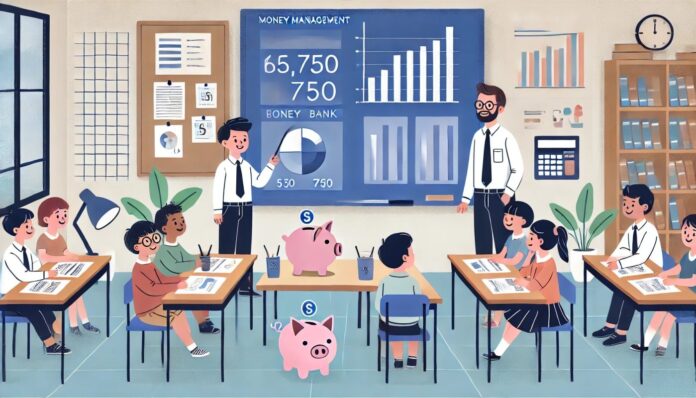Financial education is a crucial tool for ensuring that children and teenagers develop skills and habits that will help them manage their money effectively throughout their lives. From basic money concepts to advanced investment and financial planning strategies, financial education provides the necessary foundation for making informed and responsible decisions. This article explores the importance of financial education, offers practical strategies for teaching young people, and provides valuable tips for parents and educators.
1. The Importance of Financial Education
Financial education is essential for the healthy financial development of children and teenagers for several reasons:
- Development of Financial Skills: Teaching about finance early on helps build important skills such as budgeting, saving, and money management that are essential for adulthood.
- Prevention of Future Financial Problems: With a solid foundation in personal finance, young people are less likely to face serious financial issues such as excessive debt and financial stress.
- Informed Decision-Making: Financial education empowers young people to make more informed financial decisions, whether it’s spending, saving, or investing, leading to a more secure future.
- Promotion of Financial Independence: Understanding how to manage money prepares young people for financial independence and responsibility, facilitating the transition to adulthood.
2. Strategies for Teaching Financial Education
Teaching financial education should be adapted to the age and understanding level of the young people:
- Young Children (4-8 years):
- Basic Concepts: Introduce the concept of money through games and practical activities. Use toys like cash registers and play coins to teach about change and money value.
- Piggy Bank: Use a piggy bank to teach the importance of saving. Encourage children to save a portion of money they receive as gifts or allowances.
- Simple Shopping: Take children on small shopping trips and explain how money is exchanged for products and services, helping them understand the purchasing process.
- Elementary School Children (9-12 years):
- Budgeting and Planning: Teach them to create a simple budget to manage an allowance or gift money. Show how to plan spending and savings.
- Savings Goals: Help them set financial goals, such as saving for a toy or a book they want. Teach the importance of planning and saving to reach these goals.
- Financial Experiments: Conduct practical activities, such as simulating a toy market, to teach about prices, purchases, and financial choices.
- Teenagers (13-18 years):
- Money Management: Teach them to track income and expenses with a spreadsheet or budgeting app. Explain concepts like income, fixed and variable expenses.
- Saving and Investing: Introduce the concepts of saving and investing. Explain the importance of saving for the future and the basics of compound interest and investments.
- Credit and Loans: Discuss how credit works, including how debts affect credit scores and the risks associated with loans and financing.
3. Tips for Parents and Educators
Parents and educators play a crucial role in the financial education of young people. Here are some practical tips:
- Be a Role Model: Demonstrate good financial practices through your own actions. Show how you manage your money, create budgets, and save for future goals.
- Start Money Conversations: Discuss finances openly in everyday situations. Use everyday opportunities to talk about budgeting, saving, and financial decisions.
- Use Educational Resources: Explore books, games, and educational apps that teach finance in a fun and engaging way.
- Involve Young People in Financial Decisions: Include them in family financial decisions, such as planning purchases or budgeting for special events. This helps them understand the impact of financial choices.
- Offer Rewards and Incentives: Reward positive financial behaviors, such as saving money or creating a successful budget. This encourages the continued practice of good financial habits.
4. Resources and Tools for Financial Education
There are various resources available to support financial education:
- Books: Use children’s and teen books that cover financial concepts in a clear and accessible manner.
- Apps: Explore apps designed to teach finance in an interactive and enjoyable way.
- Educational Websites: Visit sites dedicated to financial education that offer games, videos, and activities about money and finance.
- School Programs: Check for financial education programs in schools or community organizations that offer courses and workshops.
Financial education is essential for preparing children and teenagers for a healthy and successful financial future. By teaching financial concepts and involving young people in responsible financial practices from an early age, parents and educators help build a strong foundation for financial independence and balanced adult life. Invest in your children’s financial education and set them on the path to a promising financial future.
Start teaching financial education today! Use available resources and tools to integrate financial concepts into the daily lives of children and teenagers. Sign up for our newsletter for more tips and information on how to prepare young people for a successful financial future.

